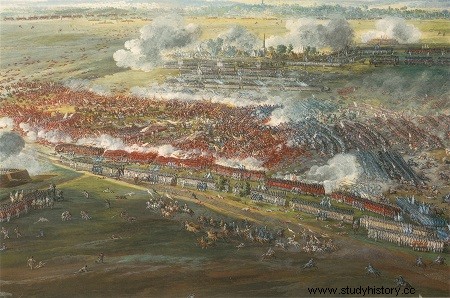
French victory having opposed, in the current Belgian province of Hainaut, the armies of the English, Hanoverians, Dutch (and some Austrians), to those of King Louis XV.
Traditionally regarded as the great military success of the Maréchal de Saxe* — although, without in any way wishing to diminish the merit of the latter, that of the French monarch, present on the battlefield, was no less decisive — Fontenoy is not, with regard to the European political situation, just one of the many episodes
of the War of the Austrian Succession (1740-1748).
On the death of Emperor Charles VI, the claims of many European princes - in defiance of the imprescriptible and inalienable rights that his own daughter had to succeed him - triggered a vast conflict, during which, through the interplay of alliances, ruptures, battles and treaties, France finds itself facing a broad coalition led by its great rival, England.
From the beginning of 1745, each of the belligerents knew that the engagement to come would be decisive:20,000 English had landed on the continent, assisted by the Dutch. The French army, for its part, about 70,000 strong, was energetically taken in hand by Marshal de Saxe (natural son of Auguste II of Poland and Anne de Koenigsmarck), warlord of a fifties,
famous for his pranks and afflicted with cruel attacks of dropsy making it difficult for him to sit in the saddle. Also we will see him, during the battle of Fontenoy, not on horseback, but in a wicker car quickly moved by his staff to all the "hot spots" of the theater of operations.
For him, an excellent strategist, the situation is clear:the place of the confrontation stopped, it will be necessary to go to Tournai, take the city, then head towards the Scheldt in order to be able to better control Austrian Flanders , territorial issue of hostilities. From April 30, conscious of the leading strategic role played by Tournai, the allies marched on this city, convinced that they could, thanks to this important point of support, easily overwhelm the French troops:"I will go to Paris or I'll eat my boots...", says bluntly, and very imprudently, the Duke of Cumberland, Commander-in-Chief of the Allied armies.
Learning of the maneuver of his enemies, the Marshal of Saxe immediately gave the order to cut the road to the allies by immobilizing, on the one hand, about twenty thousand men in front of Tournai, and by making take up position, on the other hand , 47,000 men in front of Antoing, a village not far from the Scheldt; this ground is, in fact, judged by the commander-in-chief of the French troops as favorable for the engagement which is announced.
